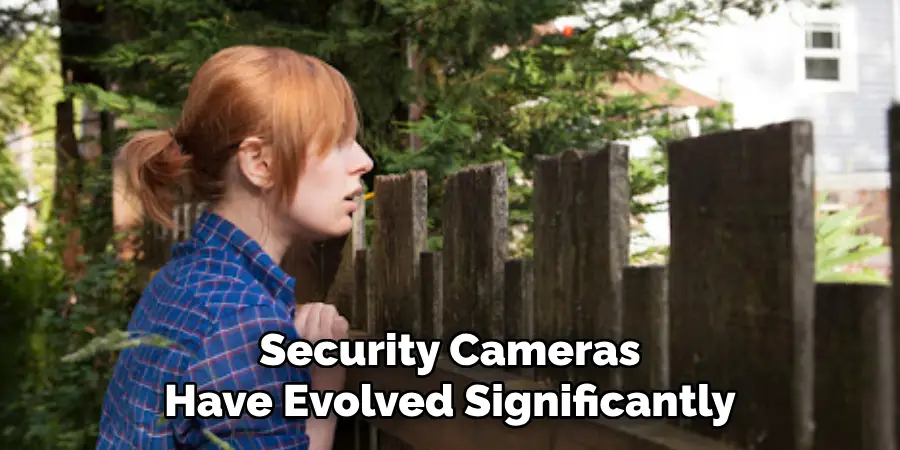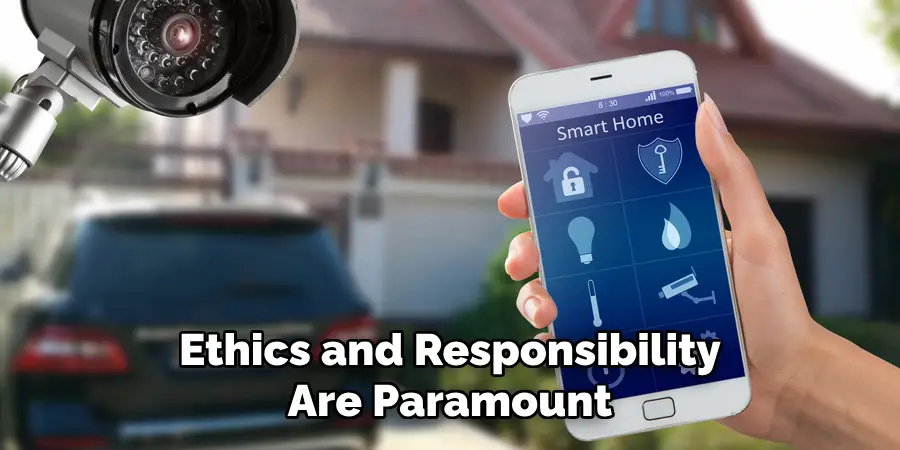In an age where security technology has become increasingly accessible, many homeowners are interested in understanding the capabilities and privacy implications of security cameras within their neighborhoods. As a tool for enhancing safety, these devices can provide significant benefits by deterring crime and ensuring peace of mind. However, it’s essential to approach the topic with respect for privacy laws and ethical considerations. This guide is designed to help you with how to view neighbors’ security camera.

This introduction aims to provide a balanced view, taking into account both the advantages of security cameras and the necessary legal boundaries that must be observed when considering viewing or interacting with neighbors’ security footage.
Understanding the Technical Capabilities of Security Cameras
Security cameras have evolved significantly over the years, packing a variety of advanced features suited for residential and commercial surveillance. Modern cameras are equipped with high-resolution imaging, allowing for clear video capture that enhances identification capabilities. Night vision technology is another common feature, utilizing infrared LEDs to provide visibility in low-light conditions without alerting potential intruders. Motion detection is also prevalent, enabling cameras to begin recording only when movement is detected, thus conserving storage space and power.
Additionally, many cameras offer remote access through mobile apps, allowing homeowners to monitor their property in real time from virtually anywhere. Some security systems integrate with smart home devices, providing seamless connectivity with other technologies, such as smart locks and lights, thereby enhancing overall security through an interoperable ecosystem. Understanding these capabilities can help users choose the right system to meet their specific needs while being mindful of privacy considerations.

Legal Considerations and Privacy Laws
Navigating the legal landscape surrounding security cameras is crucial for responsible usage and maintaining privacy. In the United States, privacy laws can vary significantly by state, but there are general principles that most jurisdictions follow. It’s typically permissible to record video on your property to protect your home and family, as long as the cameras do not infringe on reasonable expectations of privacy, such as recording inside a neighbor’s home or capturing audio.
The legality of accessing security footage from a neighbor’s camera without their consent is usually prohibited, highlighting the importance of obtaining permission beforehand. Homeowners should also be aware of local regulations regarding the placement and use of surveillance devices. For example, signs warning about surveillance can be required in certain areas to alert individuals about recording devices. Staying informed about these laws and respecting them ensures compliance and fosters trust within the neighborhood, encouraging a community-driven approach to security where privacy is respected and preserved.

Encouraging Ethical and Responsible Behavior
Ethics and responsibility are paramount when deploying surveillance technology. As privacy concerns rise, it’s vital to use security cameras in ways that respect the boundaries of others. Homeowners should strive to position cameras solely within their property lines to avoid infringing on neighbors’ privacy. Open communication with neighbors about the use and capabilities of security cameras can alleviate concerns and promote transparency.
It’s also beneficial to engage in community watch programs, which can enhance collective security efforts and establish a sense of shared responsibility. Moreover, individuals are encouraged to regularly review their state and local laws, ensuring that their usage remains compliant with the legal standards. Embracing these practices not only demonstrates respect for the privacy of others but also builds stronger, more trusting neighborhood relationships.

10 Methods How to View Neighbors’ Security Camera (Legally and Ethically)
In our increasingly interconnected world, home security systems have become a staple for ensuring safety and peace of mind. However, curiosity about how these systems work—especially our neighbors’—is natural, particularly among privacy enthusiasts, tech-savvy individuals, and home security experts. This listicle explores ten ethical and legal methods to understand and potentially view your neighbors’ security camera feeds while respecting privacy laws.
1. Understand Local Privacy Laws
Before attempting to access any security camera footage, familiarize yourself with local privacy regulations. Many regions have strict laws regarding the viewing and recording of video footage that do not belong to you. Understanding these laws ensures that you don’t unintentionally violate someone else’s privacy rights.
2. Talk to Your Neighbors
A direct approach is often the simplest and most effective. If you have a legitimate reason to view their footage—such as monitoring a shared driveway or identifying suspicious activity—discuss it openly with your neighbors. Transparency can foster trust and cooperation, potentially leading to a mutually beneficial arrangement.
3. Community Security Systems
Consider the potential of community-shared security systems. Some neighborhoods opt for joint security solutions, where multiple households share video feeds for enhanced communal safety. Joining such an initiative allows you to legally access the footage from various cameras, including those belonging to neighbors, while maintaining collective privacy.

4. Neighborhood Watch Programs
Many neighborhoods have established watch programs to increase security. Participating in these programs not only provides peace of mind but might also offer access to shared camera feeds under specific circumstances. It’s a collective effort that emphasizes safety and vigilance.
5. Use Publicly Available Platforms
Some security cameras come with features that allow footage to be shared publicly through secure platforms. If your neighbors have opted to make their camera feeds available, you may access these with their permission or via community websites designed for this purpose.
6. Collaborate on Safety Projects
Collaboration on community safety projects can lead to shared access to security feeds. Participating in joint efforts to enhance neighborhood safety might involve sharing video footage for analysis and strategic planning, provided all involved parties consent.
7. Offer Technical Support
If you possess technical expertise, offering assistance with your neighbors’ security systems could provide you with insight into how they operate. This can lead to opportunities for collaboration and possibly viewing footage when necessary for system maintenance or troubleshooting.
8. Work with Homeowners’ Associations
Engage with your local homeowners’ association (HOA) to discuss security measures. HOAs often handle collective security arrangements and camera placements, which might include shared access protocols to enhance neighborhood safety.
9. Research Camera Brands and Models
Familiarize yourself with the various brands and models of security cameras available on the market. Understanding their functionalities, like cloud storage features or app-based access, might offer insights into how video data is managed and accessed legally.
10. Consult Security Professionals
Seek advice from security professionals who can offer legal ways to access footage, particularly for shared or community camera systems. They can provide guidance on setting up similar systems in your own home that comply with privacy standards, ensuring both security and respect for personal boundaries.
Tips for Achieving the Best in Security and Privacy
Achieving the best results in maintaining security while respecting privacy entails a strategic and conscientious approach. First and foremost, regularly update your security system’s firmware to protect against vulnerabilities, ensuring your technology remains resilient against potential breaches. Position your cameras thoughtfully to cover key areas such as entry points but without infringing on any public or neighborly spaces, which supports legal and ethical standards.
Investing in high-quality, reliable security equipment can significantly improve performance and durability, providing better footage quality and system reliability. Additionally, establish clear communication channels with your neighbors to address any privacy concerns openly and foster a cooperative environment around neighborhood security. Emphasizing ongoing education about emerging security technologies and privacy laws is also vital, as it allows you to adapt to changes and maintain best practices effectively.
Things to Consider When Enhancing Neighborhood Security
When considering enhancements to your neighborhood’s security, several factors can ensure that solutions are effective, respectful of privacy, and sustainable over time. Begin by assessing the unique security needs of your community, identifying potential vulnerabilities specific to the area. Engage with neighbors to understand their concerns and suggestions, fostering a collaborative approach to security planning. Evaluate the technology and equipment options available, balancing cost with functionality to choose systems that suit the neighborhood’s budget and requirements.
Involve legal experts or local authorities to ensure compliance with privacy laws and regulations, protecting both individual rights and collective safety. Moreover, consider the ease of use and accessibility of security systems for all residents, ensuring everyone can engage effortlessly with any implemented solutions. Finally, plan for regular reviews and updates to the systems, adapting to any changes in the environment or emerging security threats, to maintain their effectiveness and reliability over time.
Conclusion
In today’s interconnected world, enhancing security while maintaining privacy is a nuanced task that requires a collaborative and well-informed approach. By engaging with community members, leveraging technology responsibly, and adhering to legal frameworks, neighbors can create a safe and respectful environment. From establishing clear communication and cooperation with neighbors to understanding the latest security technologies, every action contributes to building a cohesive and protected neighborhood. As security needs evolve, ongoing education and adaptation will remain crucial to safeguarding communities while upholding the essential value of privacy. So, there you have it – a quick and easy guide on how to view neighbors’ security camera.
